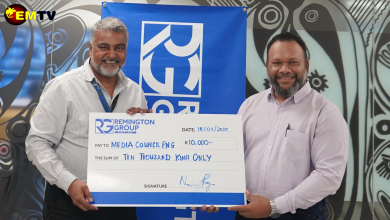As India’s COVID Crisis Rages, Its Neighbors Brace for the Worst
By Bhadra Sharma, Aanya Wipulasena, and Vivian Wang (c.2021 The New York Times Company)
KATHMANDU, Nepal — Most of Nepal is under lockdown, its hospitals overwhelmed. Bangladesh suspended vaccination sign-ups after promised supplies were cut off. Sri Lanka’s hopes of a tourism-led economic revival have collapsed.
As India battles a horrific surge of the coronavirus, the effects have spilled over to its neighbors. Most nearby countries have sealed their borders. Several that had been counting on Indian-made vaccines are pleading with China and Russia instead.
The question is whether that will be enough, in a region that shares many of the risk factors that made India so vulnerable: densely populated cities, heavy air pollution, fragile health care systems and large populations of poor workers who must weigh the threat of the virus against the possibility of starvation.
Although the countries’ outbreaks cannot all be linked to India, officials across the region have expressed growing dread over how easily their fates could follow that of their neighbor.
“I feel like it’s a world war situation,” said Dr. Rajan Pandey, a physician in Banke, a Nepalese district along the India border, who said he was turning away 30 patients asking for hospital beds every day.
“If lockdown was enforced two weeks ago, borders were closed and migrant workers returning from India were quarantined better, this situation could have been avoided,” he said.
As is, he added, “we are still waiting for the worst.”
Nepal shows most clearly how the crisis has rippled. After an initial wave last year, cases in the Himalayan nation of 30 million had plunged by January. Residents gathered for Nepalese New Year celebrations last month, and hundreds of thousands of migrant workers returned to India, where they go each year in search of jobs.
But as the new surge began raging across India, many of those workers returned across the porous, 1,100-mile border. With them came the virus.
In the border district of Kanchanpur, more than 1,500 Nepalis come back from India each day. About one-fifth of them test positive, said Ram Kumar Mahato, the chief district officer there.
In Banke, as many as 9,000 workers returned last week, said Rajesh Saru Magar, a UNICEF worker. Only about 20% are being tested because of a lack of capacity, Magar said. Of those, 30% were positive.
Yet even now, Nepal’s government has closed only 22 of its 35 border checkpoints, a decision that officials have said is necessary to ensure that citizens can return. Until late April, Nepal also allowed passengers from India to transit through the capital, Kathmandu, a possible loophole for those seeking to get around other countries’ bans on travel from India.
Now Nepal is recording as many as 9,000 infections per day, with more than 40% of tests coming back positive. More than 4,200 people had died by Wednesday evening. Experts say the cases are likely being undercounted.
Still, imported cases are not the only reason for the crisis engulfing Nepal.
As in India, the government did not expand health facilities when coronavirus cases appeared to be under control last year, and it was slow to enforce social distancing restrictions when it became clear that they were not.
Critics have pointed to huge, maskless rallies in India hosted by Prime Minister Narendra Modi even as infections rose. Likewise, both the ruling and opposition parties in Nepal held large political gatherings after the prime minister dissolved Parliament in December.
“Because of this, the virus reached every corner of the country,” said Dr. Krishna Prasad Paudel, director of the public health and disease control division at Nepal’s health ministry.
Prime Minister K.P. Sharma Oli told CNN on Saturday that Nepal’s situation was “under control” but acknowledged that “political instability” had led to “some mistakes.” On Monday night, Oli lost a vote of no confidence in Parliament, throwing Nepal into further turmoil.
Aid workers have warned that the parallels between Nepal and India may continue as hospitals turn all but the most critically ill patients away. With medical oxygen supplies running short, as they did in India, Nepal’s government has imposed quotas for each hospital that doctors say are far from adequate. Reports of patients dying from insufficient oxygen have spread.
“What is happening in India right now is a horrifying preview of Nepal’s future if we cannot contain this latest COVID surge,” Dr. Netra Prasad Timsina, chair of the Nepal Red Cross, said in a statement last week.
Vaccines are unlikely to help immediately. Nepal paid for 2 million doses from India’s Serum Institute, the world’s largest producer of vaccines. But as India’s crisis has escalated, its government has essentially halted exports, leaving Nepal 1 million doses short.
India’s pause has also scrambled vaccination plans in Bangladesh. Late last month, authorities there announced that they would temporarily stop accepting new registrations for shots after supplies from the Serum Institute were cut off.
Now Bangladesh is short roughly 1.5 million of the doses it needs to administer second shots, let alone first ones. It has turned to China and Russia for new supplies.
Despite the shortfall, Bangladesh has otherwise fared better than many of its neighbors. Numbers have dropped rapidly since an April surge, even though Bangladesh, like India, has many crowded slums and impoverished laborers who continued to work through lockdowns.
Still, officials warn that its luck may not hold. On Saturday, authorities announced that they had detected Bangladesh’s first case of a variant that was first discovered in India.
“If India’s present COVID-19 infection and death situation happens in Bangladesh, our situation will be like falling trees during a heavy storm,” Anwarul Iqbal, a Bangladeshi public health expert, said.
Cases are also rising along Bhutan’s border with India, even though the country of about 750,000 has at least partially vaccinated 95% of its eligible population. Bhutan last month suspended entry for foreign workers after experts cited concerns about laborers coming from India.
The border between Pakistan and India was closed even before the pandemic because of political tensions. But in Pakistan, too, cases are rising. Asad Umar, the official leading its coronavirus response, cited the fact that “the entire region is exploding with cases and deaths” to explain new lockdowns.
Even in countries where a spring surge has not been directly linked to the Indian outbreak, the ripple effects have created fresh pain.
Experts have attributed Sri Lanka’s new wave, which has brought its highest daily numbers yet, to domestic holiday travel last month. But the crisis in India led to the suspension of travel between the two countries, dashing hopes that a planned air travel bubble would revive Sri Lanka’s flailing tourism industry. In 2019, India was the country’s largest source of tourists, accounting for nearly one-fifth of arrivals.
Nipuna Lokuhetty, a director of a tour company that mostly serves Indian tourists, has seen just a handful of visitors this year. Lokuhetty, 32, who lives in Rajagiriya, a Colombo suburb, said he had laid off 70% of his employees since the start of the pandemic. The salaries of those remaining were cut at least in half.
“The travel bubble was a great initiative,” he said. “Unfortunately, we couldn’t reap any benefits from it because of the COVID-19 situation in India.”
In Nepal, as staggering as the new numbers are, experts have said the surge will likely take more than a month to the peak. Nepal’s health care system is even more strained than India’s; when the government released its coronavirus response plan last May, it estimated that local facilities would be insufficient if there were more than 5,000 active cases at once. Now there are more than 100,000.
For many Nepalis, anger and sorrow have mixed with utter helplessness.
Pramod Pathak, a businessman in the border district of Kailali, has watched in anxiety and sorrow as migrant workers returned from India. They have crowded every day into overwhelmed testing centers or — for the many for whom there are no tests — simply crammed into shared cars and returned to their villages.
“The virus is transmitting as they travel in jam-packed vehicles,” Pathak said. “There’s no safety for them no matter where they go — be it India or Nepal.”






